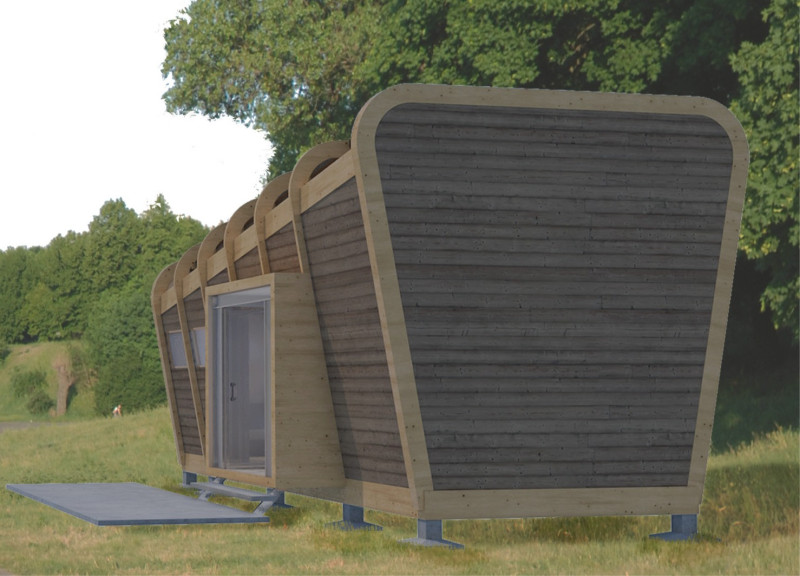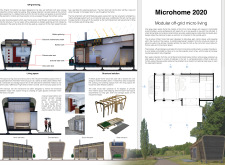5 key facts about this project
From a functional perspective, the architecture of the Microhome is carefully orchestrated to maximize usability. The open-plan living space is at the heart of the design, facilitating diverse activities such as cooking, sleeping, and gathering. This layout encourages a sense of community within the household, allowing for fluid movement and interaction among residents. The inclusion of a mezzanine sleeping area not only optimizes vertical space but also contributes to a sense of openness, making the compact home feel more expansive than its measurements suggest.
One of the standout features of the Microhome 2020 is its emphasis on indoor-outdoor connectivity. Large, operable doors connect the interior of the home with its surrounding environment, creating a seamless transition that allows natural light to flood the space. This design decision not only enhances the aesthetics but also reinforces the project's goal of fostering a close relationship with the outdoors. Outdoor areas become extensions of the living space, encouraging occupants to engage with nature regularly.
Durability and sustainability are central to the design narrative, as highlighted by the choice of materials. The structural frame employs glued laminated timber, a robust and environmentally friendly choice that reduces waste. This material selection is significant not only for its strength but also for its thermal performance, which helps minimize energy consumption. Inside, plywood and natural fiber composites are utilized, providing a warm and inviting ambiance while adhering to eco-friendly principles.
The Microhome incorporates advanced systems for water and energy management, a crucial aspect of sustainable architecture. A dual-function water system, featuring multiple tanks for filtered water, gray water, and black water, exemplifies a comprehensive approach to resource recycling. This design supports the notion of off-grid living, ensuring that occupants can meet their needs without relying on conventional utility lines. Additionally, the installation of a rainwater harvesting system aligns with the broader mission of reducing environmental impact, allowing for efficient water usage.
Energy is also a focal point in the overall architecture. Solar panels integrated into the double-skin roof contribute to the home’s energy needs, minimizing reliance on external electricity sources. The thoughtful arrangement of the roof not only serves the practical function of generating power but also aids in thermal insulation and rainwater collection.
The Microhome 2020 represents a cohesive blend of innovative architectural ideas and practical solutions for modern living. The overall design speaks to a growing trend towards minimalist living, emphasizing quality over quantity in residential spaces. This project illustrates that it is possible to achieve a high standard of living within a small footprint, making it an effective model for future domestic architecture.
For those interested in a deeper exploration of the project's various dimensions, including detailed architectural plans, sections, and unique design elements, a thorough presentation is available. Delving into these aspects will provide valuable insights into the architectural design process and reveal the thoughtful considerations that inform the Microhome 2020. Engaging with this material will enhance understanding of how such projects can effectively respond to the challenges of contemporary living while promoting sustainable practices.























